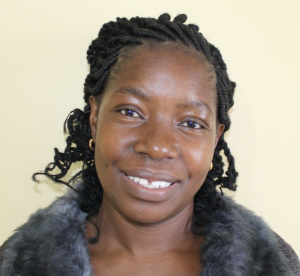Galona Primary School was established in 1975 under the sponsorship of the Galona Pentecostal Assemblies of God Church. For many years before then, pupils from Galona Village used to walk long distances to go to school in other areas. They had to cross a river that had only logs for a bridge, and one time some pupils slipped and drowned in the river as they were crossing.
That is when the Church decided to start a school that could serve the local community. It began with a total of 56 pupils but the numbers have since grown to 389 pupils and 14 teachers and staff. The school sits on a 0.3-hectare piece of land with classrooms, an administration block, kitchen, and latrines. They also have a small garden where they have planted bananas, vegetables, and nappier grass.
What Galona Primary does not have, however, is water.
"We don't have any water source in the school compound, therefore, we have to ask pupils to fetch water from the spring for use. This leads to a wastage of time that could be used to study and play. This has led to poor performance in classwork. Cases of absenteeism are also high because pupils suffer from waterborne and water-related diseases like typhoid and diarrhea due to the consumption of contaminated water," explained Deputy Head Teacher Hudson Asava.
In an attempt to meet all of the school's daily drinking, cooking, and cleaning needs, pupils must collect water from a spring in the community. The pupils traverse farms and homesteads as they walk to and from the water source which is dangerous as sometimes they are chased by dogs. The path that leads to the spring is also steep and at times they slide, falling and hurting themselves. This is especially true when it rains.
Since the spring is shared with community members, pupils waste a lot of time as they wait for their turn to fetch water. Each trip to the spring and back to school is tiring and time-consuming, costing students' academic performance.
The spring is not well protected or maintained, and as a result, the quality of its water is compromised. When it rains, the spring water becomes cloudy and dirty and the pupils have to wait for it to settle first before they can fetch it. Students report cases of typhoid and diarrhea as a result of drinking this water, which further causes them to miss school and fall behind.
The water crisis at Galona Primary School also means that sanitation and hygiene are wanting since water is at the heart of many health-promoting practices.
"The state of cleanliness in our school is very poor due to lack of sufficient water," said student Catherine.
"We have to minimize the use of water from the spring so that it can last for a longer time. In as much as we have leaky tins near the latrines, we only fill them with water in the mornings; once the water gets finished, we use the latrines and go to class without washing our hands! This has resulted in pupils suffering from hygiene-related diseases which affect the health of the pupils and in turn, it results in poor class performance."
"If we had sufficient water in school, we could clean our classes and latrines on a daily basis and also have clean and safe water for drinking. We would concentrate more on classwork and improve our grades," she continued.
Currently, all of the latrines and classrooms are only cleaned once a week despite their unhygienic state. Pupils and teachers know they are not reaching their full potential as a school, but the severe lack of water is holding them back in their health, their grades, and their development.
What We Can Do:
Rain Tank
A 75,000-liter rainwater catchment tank will help alleviate the water crisis at this school. The school will help collect the needed construction materials such as sand, bricks, rocks, and water for mixing cement. We will complement their materials by providing an expert team of artisans, tools, hardware, and the guttering system. Once finished, this tank will begin catching rainfall that will be used by the school’s students and staff for drinking, handwashing, cooking, cleaning, and much more.
We and the school strongly believe that all of these components will work together to improve standards at this school, which will help lead to better student academic performance and will help to unlock the potential for these students to live better, healthier lives.
Handwashing Stations
There is currently nowhere for students to wash their hands after using the latrines or before eating lunch, let alone the water to do so.
The student health club will oversee the 2 new handwashing stations we will provide, and make sure they are kept clean and in working condition. The club leaders will fill the handwashing stations with water daily and make sure they are always supplied with a cleaning agent such as soap or ash.
VIP Latrines
2 triple-door latrine blocks will be constructed with local materials that the school will help gather. 3 doors will serve the girls while the other 3 will serve the boys. All of these new latrines will have cement floors that are designed to be easy to use and to clean. And with a rain tank right on school property, there should be enough water to keep them clean.
Training on Health, Hygiene, COVID-19, and More
We will hold a 1-day intensive training session with students, teachers, and parents. This training will cover a wide range of topics including COVID-19 symptoms, transmission routes, and prevention; personal and environmental hygiene; and the operation and maintenance of the rain tank, latrines, and handwashing stations. There will be a special emphasis on handwashing.
Our team of facilitators will use a variety of methods to train, including participatory hygiene and sanitation transformation, and asset-based community development. We will initiate a student health club, which will prepare students to lead other pupils into healthy habits at school and at home. We will also lead lectures, group discussions, and provide illustrative handouts to teach health topics and ways to promote good hygiene practices within the school including handwashing and water treatment. We will then conduct a series of follow-up trainings before transitioning to our regularly scheduled support visits throughout the year.

 Rainwater Catchment
Rainwater Catchment
 Rehabilitation Project
Rehabilitation Project












































